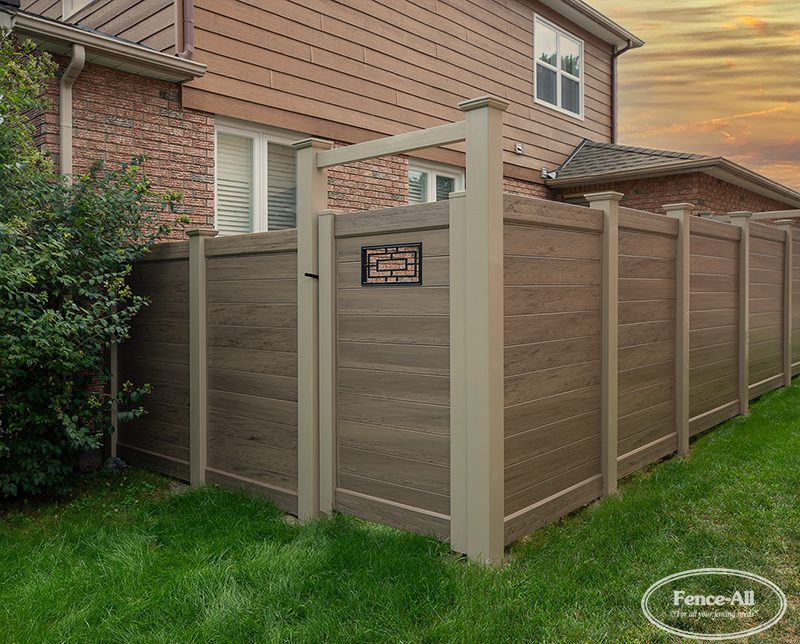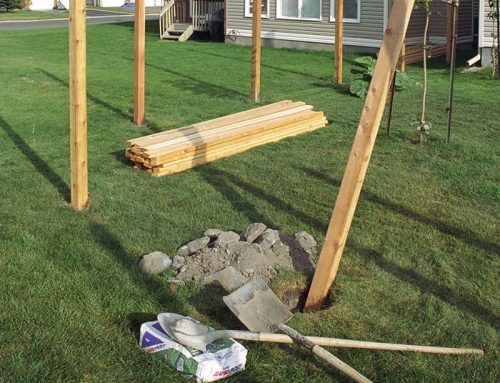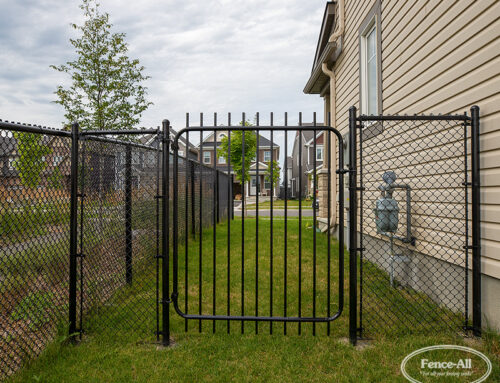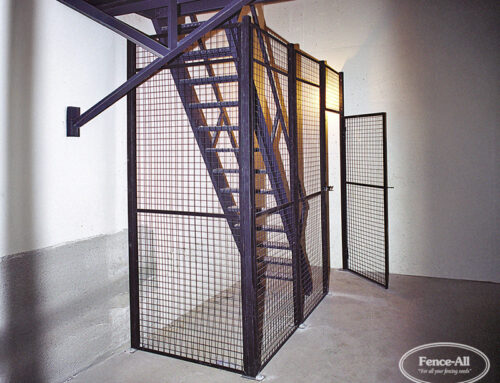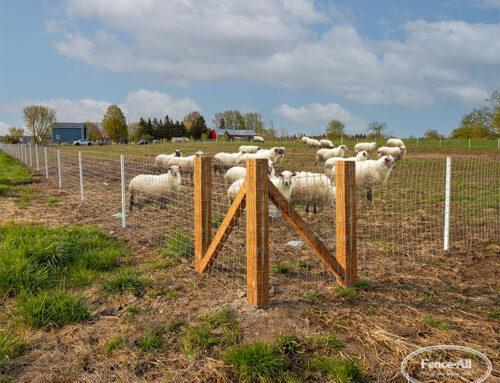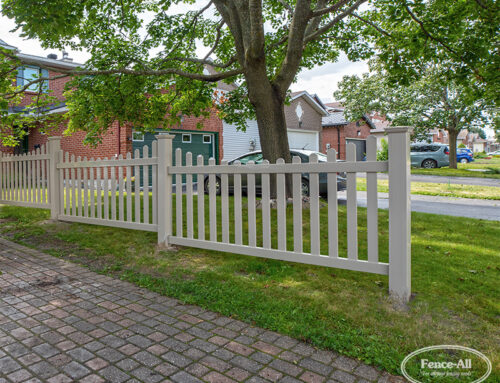When choosing a fence, many homeowners hesitate to go with vinyl/PVC because of its “plastic” appearance and concerns about environmental impact. However, vinyl fencing has come a long way and offers several advantages over traditional wood fences.
Is Vinyl/PVC safe?
Yes! High-quality vinyl fencing is non-toxic and free from harmful chemicals like lead or phthalates. It’s also resistant to pests, mold, and rot, making it a safer and more durable option for families and pets.
Are there colours that look like wood?
Yes! PVC technology has come a long way since vinyl fences first became common in the 1980s. Colours like Mocha Walnut and Green Teak feature textured patterns that look a lot warmer and inviting than the usual white.
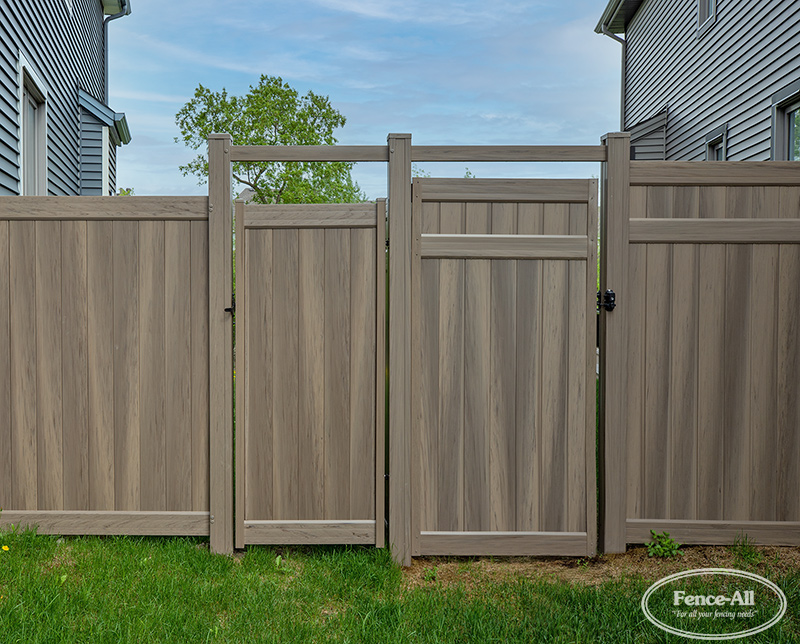
Textured colours like green teak approximate the inviting look of wood.
Installation: Similar to Wood, But Faster
Vinyl/PVC fences are installed much like wood fences—first, fence holes are dug, followed by post installation, then the rails and boards. However, our vinyl fencing systems use a routed design where components slide into place, making installation faster and more seamless than wood.
Smooth, Seamless, and Low Maintenance
Unlike wood, which requires regular staining or sealing, vinyl/PVC fences maintain their smooth, clean appearance with minimal effort. They won’t splinter, warp, or decay over time, making them a hassle-free choice for homeowners looking for long-term value.
The Bottom Line
If you’re looking for a safe, durable, and low-maintenance fence, vinyl is a great option. With today’s colour choices, the longevity and ease of care make vinyl/PVC a smart investment.

“For all your fence, deck, and railing needs”
